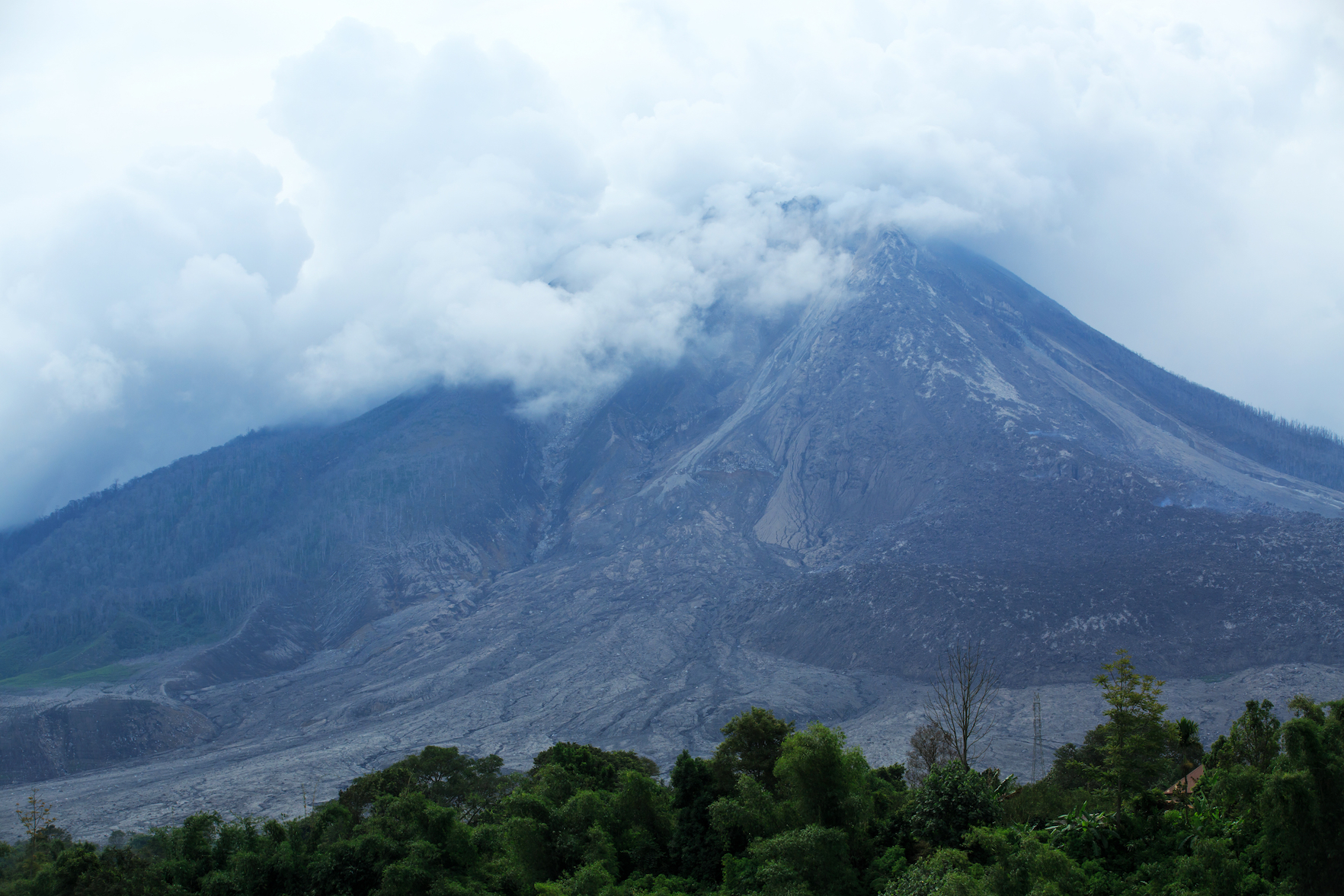
South Africans survived super volcano that could’ve ended humans
After the eruption of the super volcano Mount Toba in Indonesia around 74,000 years ago, plants and trees were struggling to survive under the drastic conditions of rapid climate change. Scientists have found evidence that early modern humans on the coast of South Africa were not only surviving, but thriving, after this catastrophic event.
In 1816, there was a year without summer. Experts believe that a volcanic eruption of Mount Tambora in Indonesia was to blame, as crops failed across North America and Eurasia and mass migrations occurred. The impact of volcanic activity at nearby Mount Toba, however, was around 100 times more intense.
The Toba eruption devastated some ecosystems more than others, and likely created areas called refugia, in which some human populations were more successful than others throughout the event. The blast at Mount Toba violently shot out fire, smoke, and microscopic pieces of glass that spread across the planet’s atmosphere like wildfire.
In the 1990s, scientists began arguing that this eruption of Mount Toba, the most powerful in the last two million years, caused a long-lived volcanic winter that may have caused humans to nearly become extinct.
Panagiotis Karkanas is the director of the Malcolm H. Wiener Laboratory for Archaeological Science at the American School of Classical Studies in Greece. He examined a single shard of glass from this explosion that was encased in resin and dated back 74,000 years. The shard had been recovered on the coast of South Africa.
“It was one shard particle out of millions of other mineral particles that I was investigating. But it was there, and it couldn’t be anything else,” said Karkanas.
The scientists found a distinct chemical signature that could be used to learn more about the massive eruption.
“Many previous studies have tried to test the hypothesis that Toba devastated human populations,” explained study co-author Curtis Marean. “But they have failed because they have been unable to present definitive evidence linking a human occupation to the exact moment of the event.”
While previous studies have confirmed that extreme climate change was caused by the explosion at Mount Toba, this study is the first to provide evidence of how people were impacted. Along the food-rich coastline of southern Africa, people not only survived but actually thrived through this historic eruption.
Photorealistic 3D models were developed based on samples and fossils removed from the dig site of ancient humans on the South African coast. Erich Fisher is an associate research scientist with the Institute of Human Origins who constructed the digital models.
“These models tell us a lot about how people lived at the site and how their activities changed through time,” said Fisher. “What we found was that during and after the time of the Toba eruption people lived at the site continuously, and there was no evidence that it impacted their daily lives.”
The study is published in the journal Nature.
—
By Chrissy Sexton, Earth.com Staff Writer













